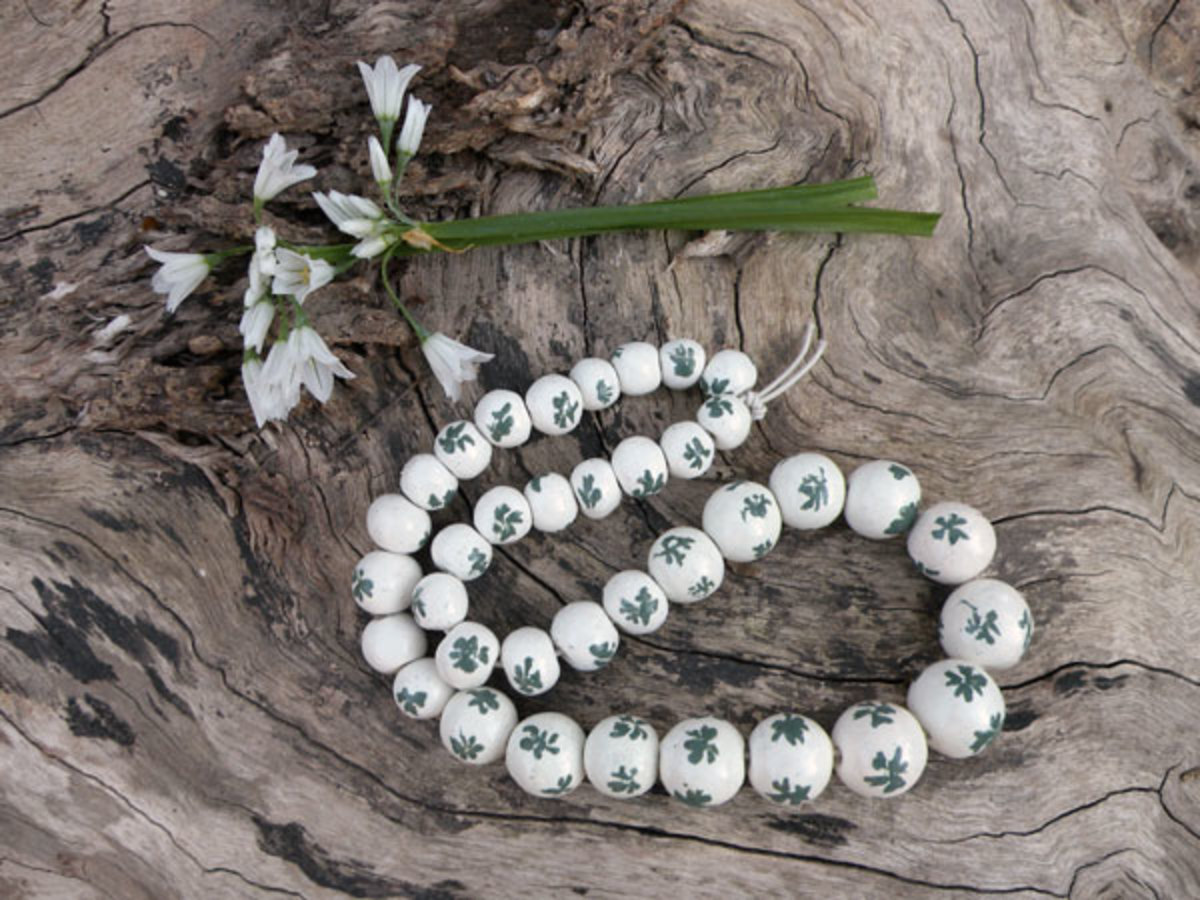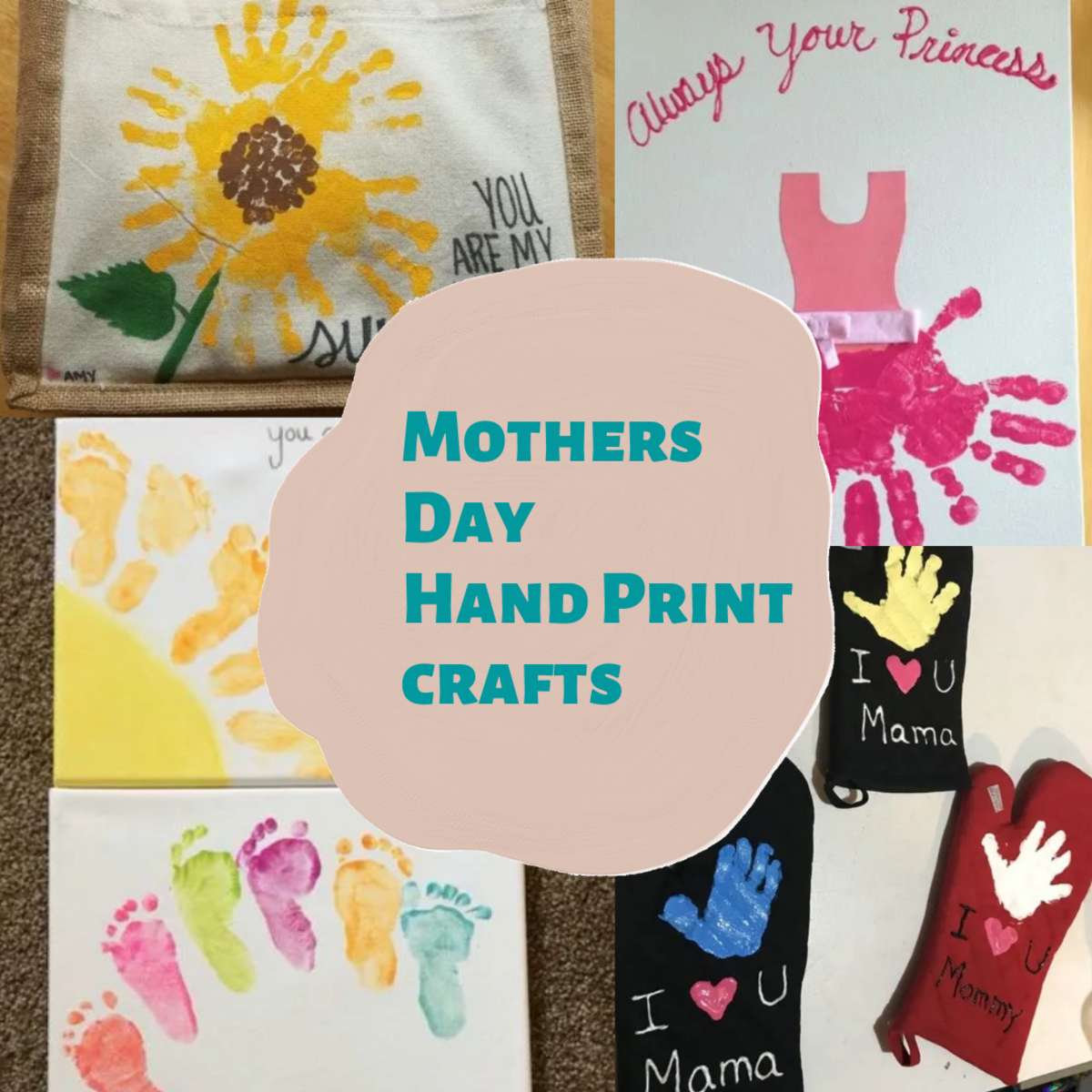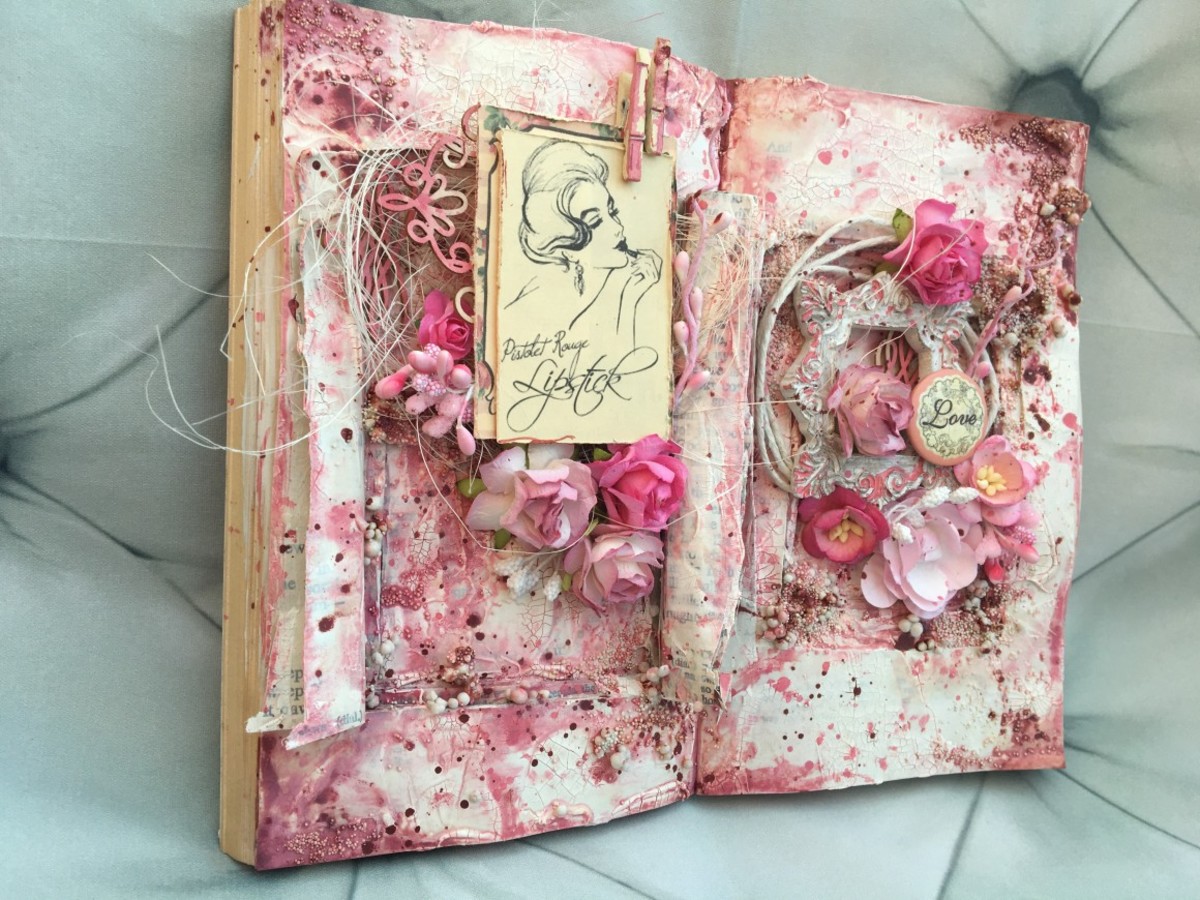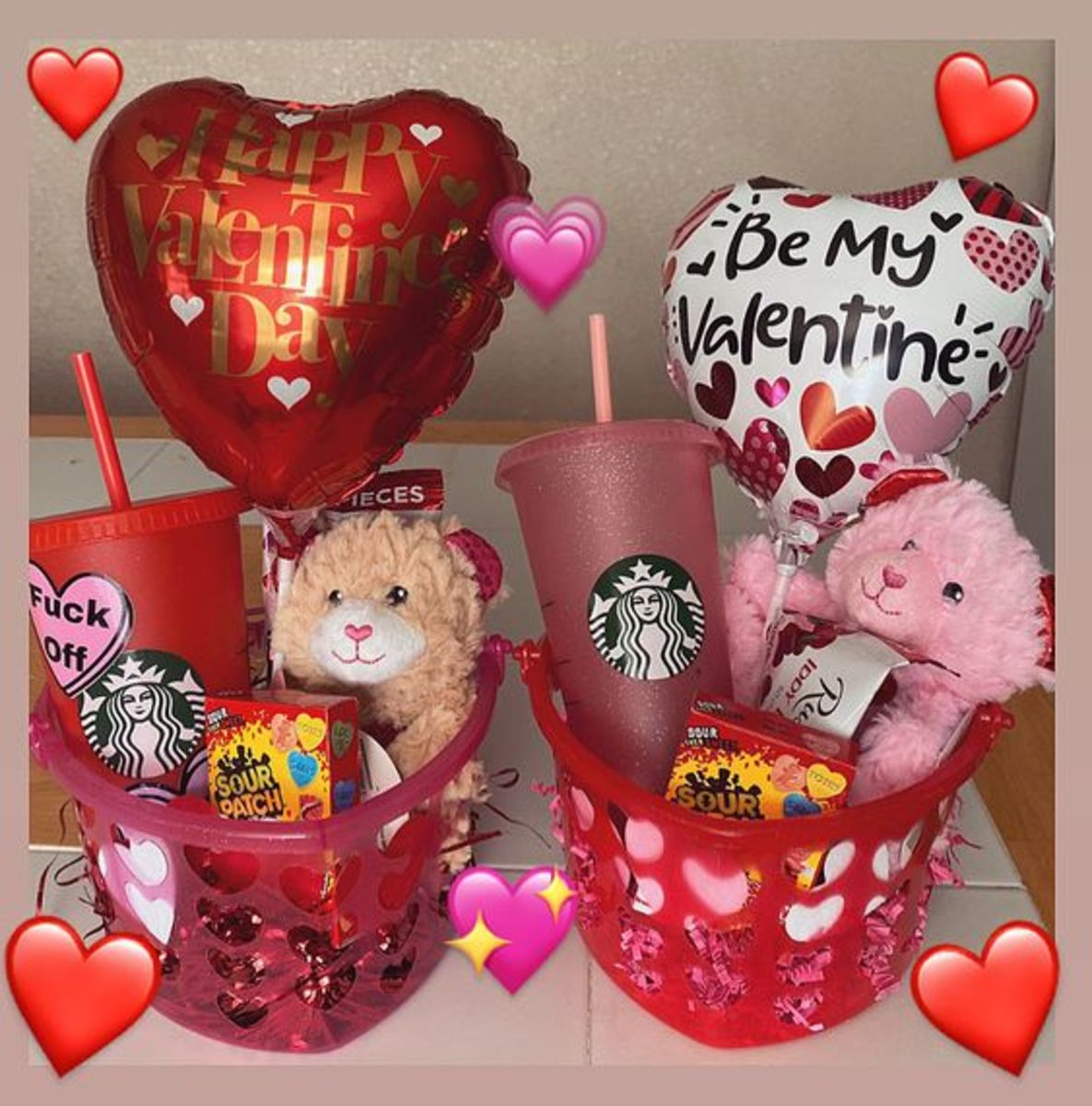Bead a Pearl Lariat Necklace
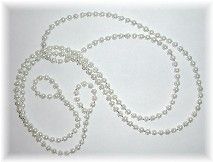
Easy-to-Make Glamorous Long Pearl Necklace
A long rope necklace or lariat is among the most versatile of accessories. You can wear it as a long necklace or belt or wrap it up for more fashion options. Pearl ropes are classic and elegant. A beaded sautoir is reminescent of the 1920s. Use modern beads for a chic, updated look. No matter what beads you choose, it's important to make sure your rope is able to withstand the extra weight inherent in long necklaces. Learn how to make a long rope that will stand the test of time and discover exciting ways to wear your treasure.
Pearl Lariat Necklace Overview
This is a really easy project, but it's important to choose appropriate materials and then assemble the rope securely. Don't choose really big heavy beads! If you are using solid beads (I used glass pearls), try to limit yourself to 6-mm diameter. You could use a few larger beads for accents, but don't make an entire necklace of big or heavy beads. You'll strain the stringing material and will make the wearer uncomfortable. Although your beads will be limited in size, you still need them to have holes that are big enough to take a strong stringing material. I like to use glass pearls and genuine pearls, which are both notorious for having tiny holes. My preferred stringing material for this project is multi-strand nylon coated beading wire (Accuflex, in my case, although other beading wire works well too), secured with high-quality crimp beads. Make sure you have good crimp beads, since they aren't all created equal. I've had trouble with the corrugated beads and smooth plated beads. You can make the crimps a part of the design. You don't have to use crimping pliers, but if you use flatnose pliers you need to make sure they have small enough ends to fit between the beads of the rope. There are lots of ways to make a long rope, so feel free to adapt these instructions to suit your tastes. If you use a stringing material other than wire, it's important that you choose a material that won't stretch! For example, silk is great for pearl necklaces, but if you try to use it for a really long strand, the silk will stretch. In a best-case scenario, you will end up with gaps between your knots as the silk stretches. More commonly, the strand will easily break. Use heat-treated nylon or some other low-stretch synthetic instead!
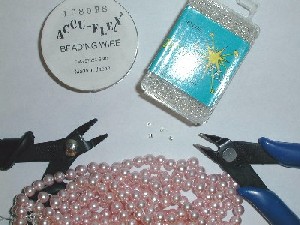
Pearl Lariat Necklace Materials
Stringing Material
I used Accuflex beading wire.
Beads
Make sure the holes are big enough for at least 2 passes with your stringing material. You will need about 4 strands of pearls for a long necklace. I spaced them using size 11 Japanese seed beads.
Wire Cutters
I used my trusty flush cutters.
Heavy Crimp Beads
I used 2-mm sterling silver tubes.
Crimping Pliers Or flatnose pliers
Difficulty Level
Easy
Time Required
Couple of Hours (take a while to string on all of those pearls)
Here's a photo of the supplies I used to make my rope. First things first! Make sure your wire will fit through your beads and your crimps. Trust me... you don't want to string a meter or two of beads and then discover your wire is too big to double back through your crimps or beads. On the flip side, your crimps will not be secure if your wire is too thin for them. Ideally (this is important for necklace strength & durability!), you want wire that will just barely double back through the beads and crimps.
Find Pearl Lariat Materials
You should be able to find pearls, beading wire, and crimp beads at pretty much any beading or craft store. Of course, materials are available online too. Feel free to add items to this list or to vote them up/down.
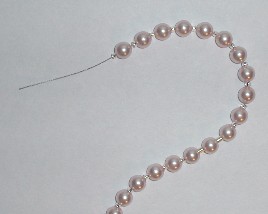
Pearl Lariat Necklace - Step 1
String your pattern of beads onto the spool of wire. I simply alternated 6-mm pearls with size 11 silverlined glass seed beads (Japanese, with relatively big holes). I tend to string 50-60 inches of beads. If you look closely, you can see the crimp beads in my pattern. They are the silver beads following the 11th and 12th pearls from the end of the wire.
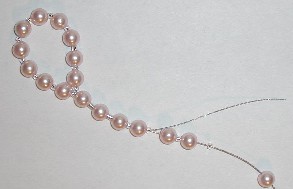
Pearl Lariat Necklace - Step 2
Keep on stringing in your pattern until you reach your desired length, nearly run out of beads, or simply can't stand to string any more. At this point, you have a design decision to make. Option 1 (not shown): You can make a simple rope. Don't simply add a crimp as your final bead, crimp, then cut. If you do, you are begging for trouble! This technique can work on a short necklace, but in a long rope, too much strain is applied to the crimp, which is likely to slip off at some point. If you want a simple rope, you string a crimp, some more beads, string a small bead, then run the wire back through your design, through the crimp, pull the design tight, crimp, then cut. Even better, have a crimp, a bead (or a few), another crimp, a bead (or a few), small turnaround bead, then run the wire up through the design. You don't want to run the wire back through an extended length of the design (it would become very stiff). Use your judgement. Let the beads slide down to the secured end, allow a few inches of wire to work with, cut the wire from the spool, unstring some beads to make your crimp pattern, thread the wire through. One of the easiest ways to tighten the design is to hold the wire end with pliers and pull the beads taut. Crimp the crimp(s), cut, and wear!
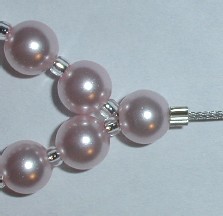
Pearl Lariat Necklace - Step 3
Option 2: I like to be able to use the beaded ropes as lariats, so I like to form a loop at one or both ends of the strand. Make your loop as big as you like, just make sure it is big enough for your beads to pass through it. The technique for making a lariat with loops is pretty much the same as for making a straight strand. First, string most of your beads onto the wire. As you near your desired length, string a crimp or two into the design and some more beads. Run your wire tail up through the crimp(s), pull the loop tight, and cut the wire.
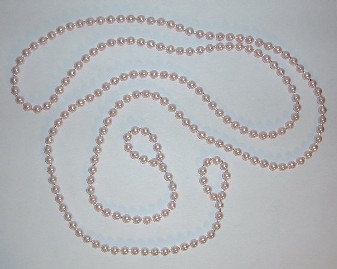
Pearl Lariat Necklace - Step 4
Here's my completed rope. I made mine using a very simple design, but there are infinite design options. It's very popular to string a special bead right in the middle of the strand so that you can center it at your throat, wrap the ends of the lariat around the back of the neck, and then knot or loop the ends in front for an elegant multistrand look. I've taken photos of some lariat style ideas to help you explore the fashion possibilities. Enjoy!
So How Do You Wear It?
I took some photos of ways you can wear a lariat necklace. The possibilities are limited only by your imagination!
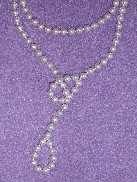
Loop within a Loop
Ways to Wear a Lariat Necklace
You could simply wrap the strand around your neck or waist or you could slip one loop through the other to secure the strand. To make the look in this photo, start by placing the center of the strand at your throat, wrap the ends behind your neck and around to the front, then slip one loop into another. Keep the sides even or go for an asymmetrical look.
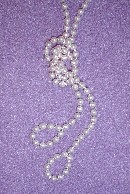
Simple Overhand Knot
Ways to Wear a Lariat Necklace
To get this look, grasp both strands in your hand and tie a single overhand knot. This look is also very cool when worn down the back instead of the front, with upswept hair to show the beads (and back) to their best advantage.
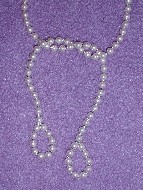
Tie It All Together
Ways to Wear a Lariat Necklace
Another style to try is to tie one strand over another, as you would your shoelaces, except without the bow. If you like, make another wrap to form a knot. You could tie the strands close to the neck and then again further toward the ends. You could combine techniques and make a tie, then slip one loop through another. The possibilities are only limited by the length and thickness of the rope.
Finished Lariat Necklaces
Here are some examples of beaded lariat necklaces that may give you inspiration for your own designs.
Questions about making a pearl lariat necklace or comments about this lens? Here's the place for them!



